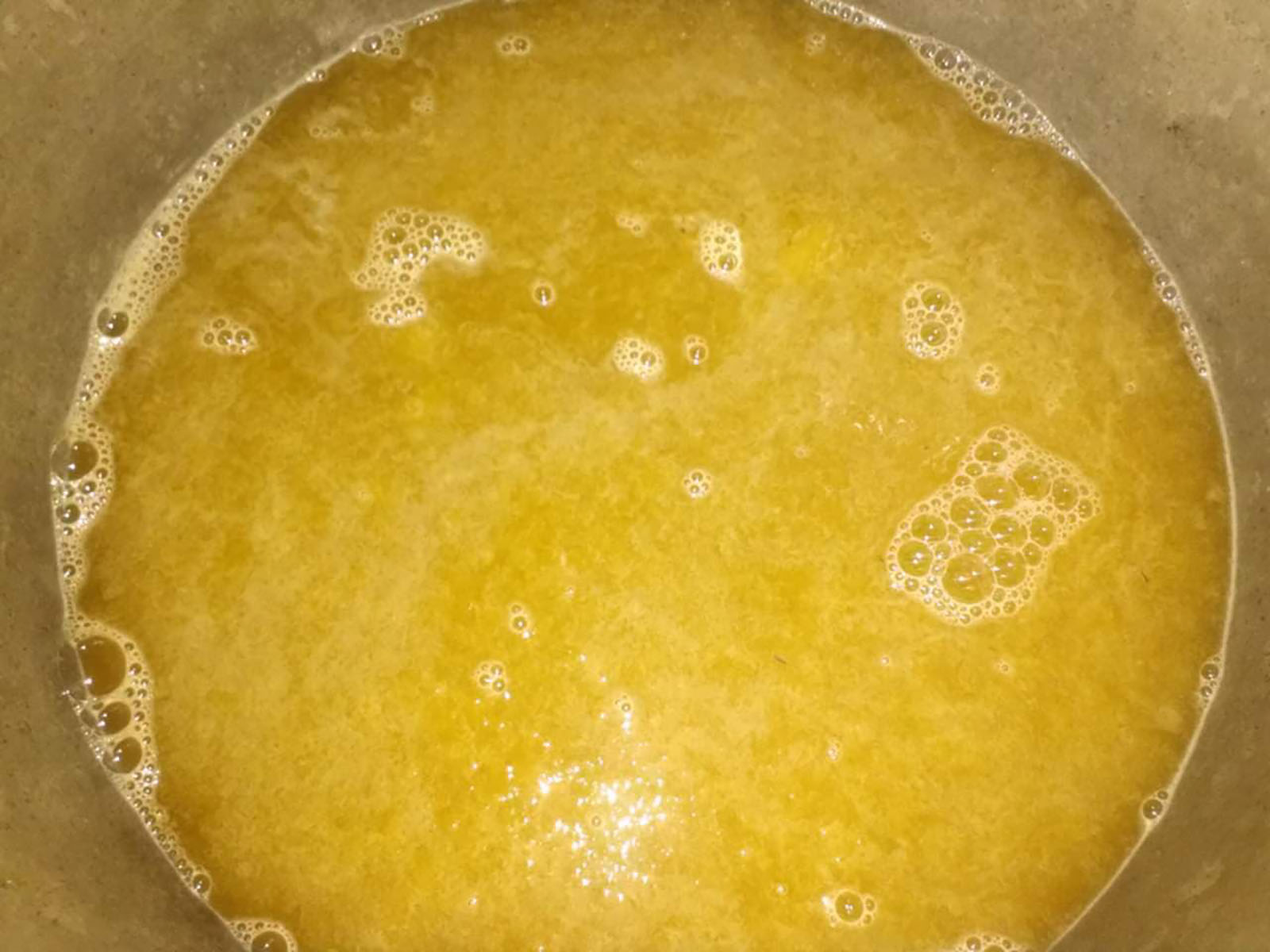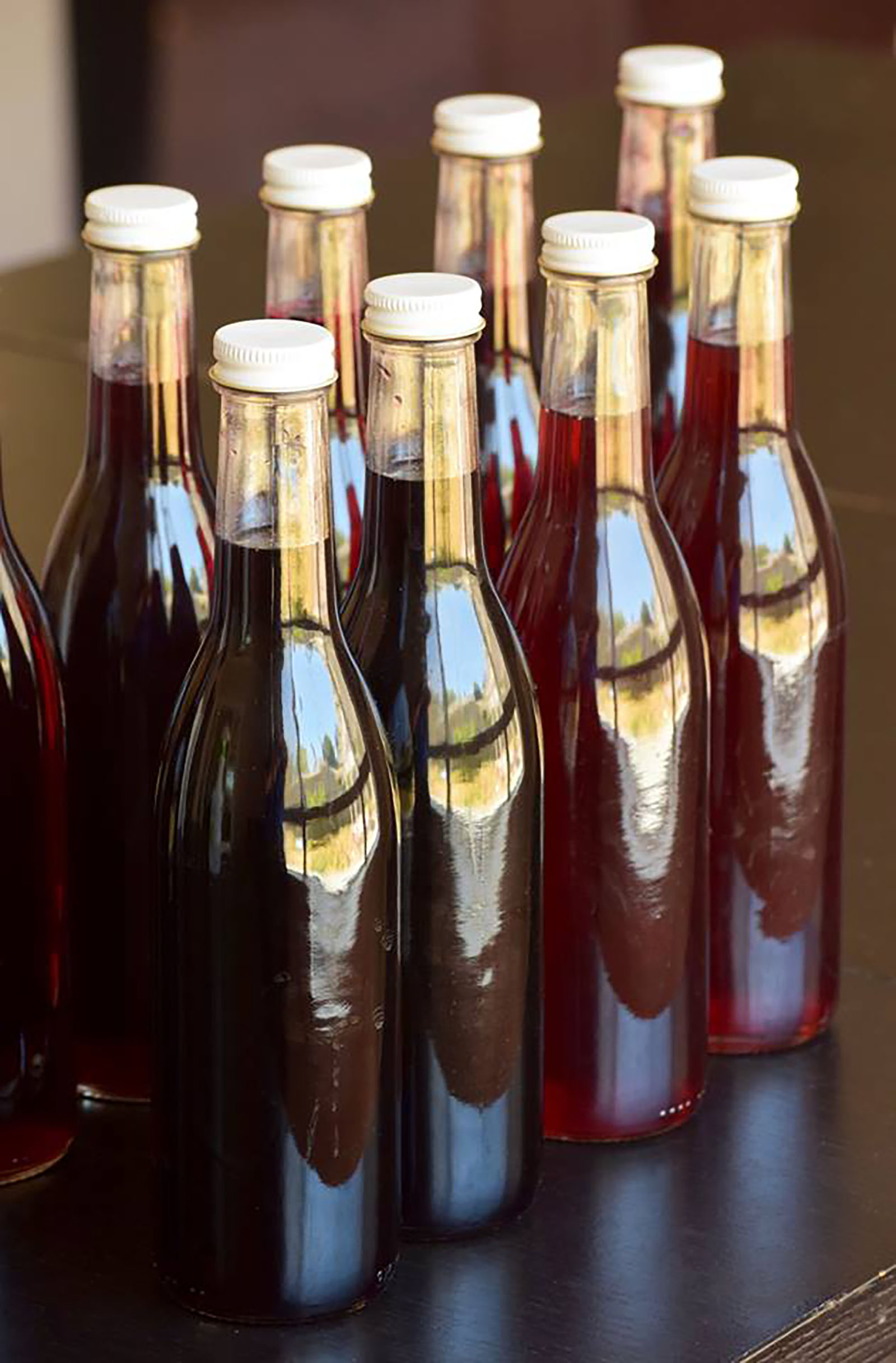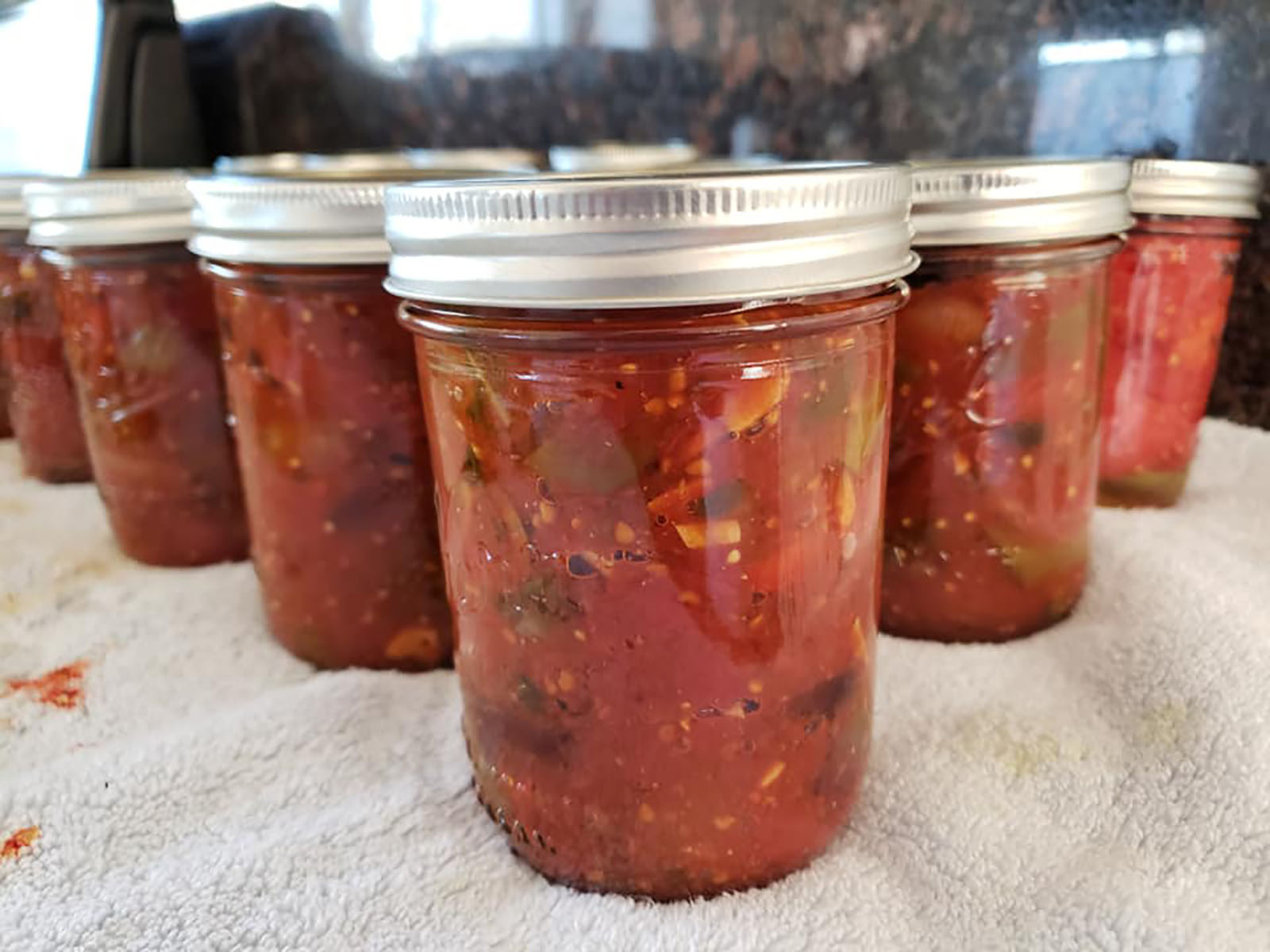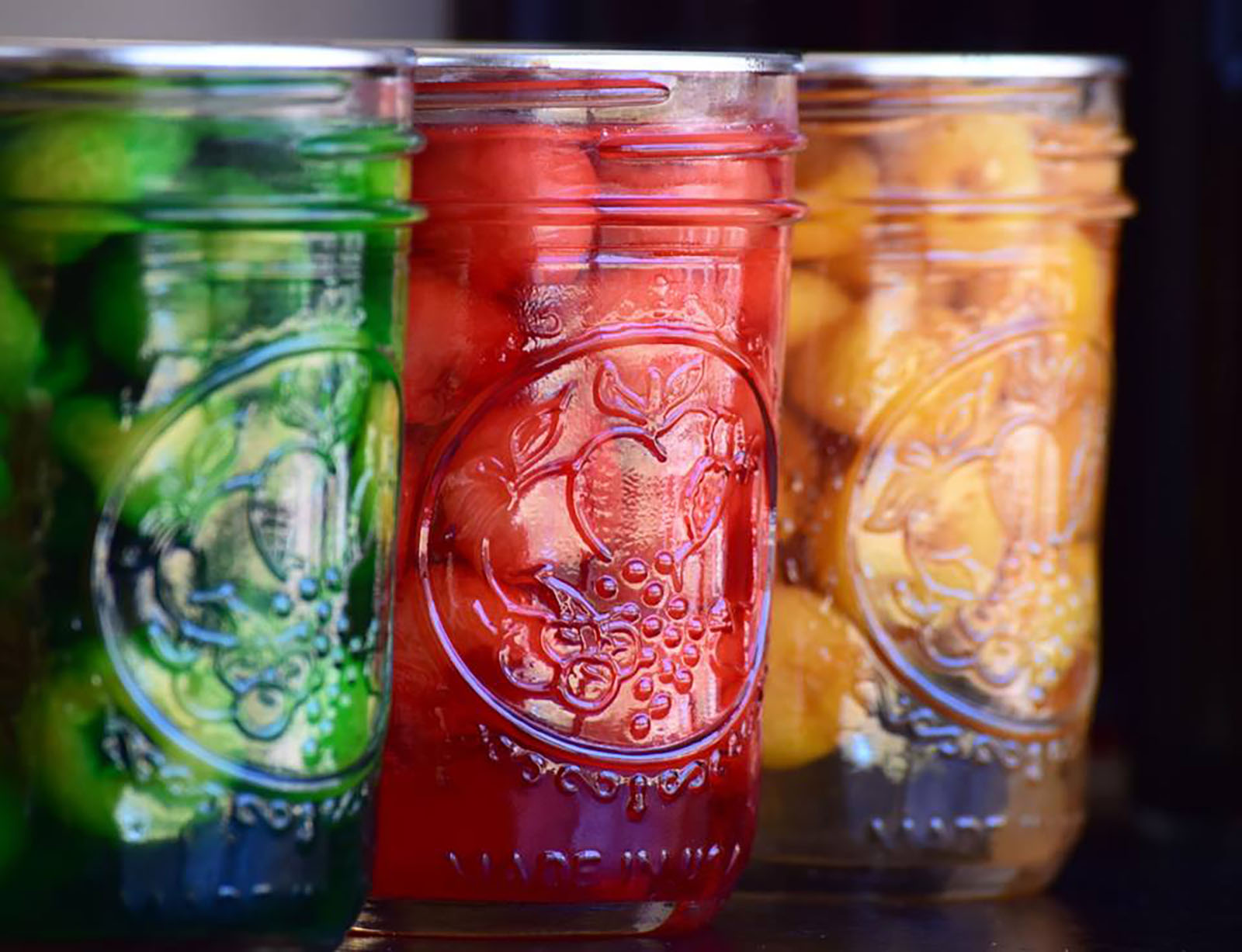Just tall enough to stand on a chair and reach the kitchen counter, Milissa Chapman, a fiber farmer from Ione, Wash., remembers her first canning experience, counting home-grown tomatoes as the first food she canned. At 6 years old, she helped her mother cook those tomatoes before pouring them into hot mason jars and sealing them shut. Her mother Martha, a Texas-born Highland cattle rancher, learned how to preserve food from her own mother, who relied on canning to aid in rationing meals during the Great Depression.
Today, Chapman, a 48-year-old woman with short, blonde hair and bright blue eyes, continues to carry the canning torch. She lives on a 75-acre farm tucked away in the Selkirk Mountain range where it snows an average of 40 feet each year and where the closest grocery store sits 30 miles away. Like her mother and grandmother before her, Chapman relies on home-canned food to keep herself full on a budget. Her home holds more than 20,000 jars, which rest on cabinets, shelves, and counters, waiting for their chance to assist a canning recipe. Since her childhood days, Chapman has canned food using various methods — open-kettle canning, the old-school technique her mother used to can their tomatoes; water bath canning, a boiling-water method famous for its ability to seal jars tightly; and pressure canning, a process similar to water baths, but with higher temperatures.

Although canning experts aren’t familiar with the term, people like Chapman call themselves “rebel canners.” Sometimes, they can foods without considering acidity, altitude, temperature, and time, which changes depending on the food being processed. They also preserve foods that haven’t been tested specifically for canning, including cheese, milk, lard, pickled eggs, cream, purees, and cured meats like bacon. Others try methods such as placing jars of food inside ovens, microwaves, electric pressure cookers, and even dishwashers to heat them, which are unsafe because they fail to heat food evenly, making it difficult to destroy microorganisms inside jars.
Chapman, a self-proclaimed rebel canner, goes rogue when it comes to canning despite the looming consequences of food spoilage and foodborne illnesses such as botulism. She says there are canners who stick to the rules, but she’d rather use the methods she learned and practiced her whole life, even if the National Center for Home Food Preservation, a U.S. Department of Agriculture source for food preservation and processing methods, doesn’t approve of them. “As far as I’m concerned, it’s nobody else’s business — what you do in your kitchen, what you feed your family,” Chapman says. She adds some home canners have called her a nasty, horrible person and told her that she’s killing her children because she doesn’t always follow safe-canning practices. “How would they know what I’m doing?” she adds. “They don’t know how safe my kitchen is, how clean my kitchen is.”
In 2014, Chapman started a private Facebook group to share canning recipes with a friend. She eventually made the group public because she saw other rebels like her being shunned or bullied in other Facebook canning groups because they veered away from approved canning recipes and processes. One first-time canner in the group posted that she was “pecked half to death in another group” and called her a smartass because she asked about why pressure canners, the only safe method for preserving vegetables, meats, poultry, and seafood, are important. Another canner posted about how she was told in a different group to burn her house down after sharing a canned pickle recipe where she added peppercorns and using that same recipe to can hot banana peppers and cucumbers with cherry tomatoes. Within the rebel canning community, home canners who strictly adhere to recommendations from the USDA and push others to do the same are called “canning police” or “canning Nazis.” But their zeal fails to intimidate Chapman. “I think everybody should have their own right to say what they want, do what they want, and brag about it,” Chapman says.
Despite the judgment and disapproval rebel canners face, their community seems to be growing online. Chapman’s “Canning Rebels” Facebook group now boasts more than 23,000 members who share advice and recipes they experimented with or were passed down through generations. And as summer wanes and the canning season starts, she says she receives anywhere from 15 to 100 requests daily from people asking to join the group. While most members reside in the United States, her group has gone international with members from Canada, Australia, Nigeria, New Zealand, Pakistan, and even Vanuatu. Chapman says she’s noticed an increase in young adults joining the group because they want to save money and eat healthier by canning their own food. There are also older people joining the group who want to rekindle canning memories from their childhood. In fact, Chapman credits rebel-canning groups like hers with preserving more than food. They also keep old traditions alive, such as open-kettle canning, which the USDA no longer identifies as a safe method because it fails to destroy harmful microorganisms that can enter jars during the canning process.
As far as I’m concerned, it’s nobody else’s business — what you do in your kitchen, what you feed your family.
The range of techniques suggests canning’s long history. It can be traced all the way back to the Napoleonic era when Napoleon Bonaparte offered 12,000 francs to anyone who came up with a new food preservation method, and it reached its peak of popularity during World War II when more than four billion cans and jars were processed in 1943, according to the USDA National Agricultural Library. Home canning was used to offset rations during World War I and World War II and became a cheap solution for families to enjoy year-round sustenance well beyond the Great Depression, says Sarah Wassberg Johnson, a food historian with expertise in late-19th and early-to-mid-20th century American food history.
Home canning was so integral to the culture that the USDA and university cooperative extensions were teaching girls how to can in clubs and home economics classes while homemakers ran community canneries in their towns, Wassberg Johnson says. Government-funded research on home canning exploded, particularly between 1943 to 1946, because of its role in supporting the armed forces. And though home canning fell by the wayside post-World War II thanks to the rise of refrigeration and commercially canned and frozen foods, the Back-to-Land and Do-It-Yourself movements in the ’60s and ’70s kept it from extinction. “There was the first kind of push back against the commercialization and push back against the corporate invasion of food, so people were interested in reviving those old war traditions,” she says.
That idea still fuels today’s canners, who embrace the nostalgia that home canning carries and who want to know and control what’s in their food, Wassberg Johnson says. Although the most recent statistic (2007) from the NCHFP documenting one in five households in the United States can food at home is outdated thanks to limited government funding for home-canning research, Martin Bucknavage, a food safety specialist from Penn State University, says he’s seen a growth in people learning how to can at their local cooperative extension.

The growth in canning practitioners includes people like Chapman who embrace experimentation beyond government-sanctioned techniques developed back in the mid-1900s to ensure canning’s efficiency and safety. “I think some of the appeal of canning now is that you don’t have to can. So you can choose when, where, and how you want to do it,” Wassberg Johnson says. “Whereas people who were growing up in the ’20s, ’30s, and ’40s, you had to do it, and it would always take a different connotation when you have to do it to survive.”
Yet people don’t always use approved recipes when they can at home today. Bucknavage says that people often go on the Internet to find canning recipes to follow at home without checking to see if they’re safe to use. Safe recipes are those that abide by USDA recommendations such as not canning pureed pumpkin and not reusing jar lids. “There are so many crazy things out there that people do,” he says. “Just because somebody puts it on the Internet, it doesn’t mean that it’s a scientifically validated type of recipe.” He also says that home canners change and experiment with canning recipes they find, similar to how home cooks modify recipes to fit the tastes and textures they prefer.
Specific recipes and canning processes tested, approved, and compiled into a complete guidebook by the NCHFP, a USDA extension located at the University of Georgia, were first developed in 1988 to ensure jars are properly sealed and prevent bacteria, yeasts, and molds from growing inside the jars during the canning process. Led by Gerald Kuhn, an extension food specialist at Penn State University, a research team sorted through and re-tested 100 years of canning advice because of a renewed interest in food preservation in the 1970s. They found that as more people started canning at home again, there was an increase in cases of botulism, a type of rare disease caused by an odorless and tasteless bacterium toxin, reported from home-canned goods because many people weren’t canning properly. Meanwhile, glass jar and lid manufacturers such as Newell, formerly known as Jarden Corporation, the owner company of Ball and Bernardin, launched their own test kitchens in the late 1970s to test the pH and acidity levels of canning recipes to ensure their safety for consumers.
Those recipes and preserving instructions were essential to home canners because it prevented accidents — from jars exploding to mold growing inside them — in the kitchen. “If it spoils, what a huge waste — both the food and the time and effort,” Wassberg Johnson says. “So I think people wanted scientific, guaranteed recipes.”
From her research, Wassberg Johnson says she’s also seen canning skip over a generation, adding to the interest and nostalgia of using old-fashioned canning recipes from the mid-20th century. That adds to why the growth in canning includes more creative and less conventional people like Chapman, who holds on to old recipes that can be traced down her family line or those shared by other home canners — even if they are no longer safe to use because they haven’t been tested for decades or can’t be readapted to modern times.

Experienced canner Ann Accetta-Scott, author of “Farm Girl’s Guide to Preserving the Harvest” and owner of the blog “A Farm Girl in the Making,” has witnessed the fights over recipes and methods that break out online between the two ends of the canning spectrum: rebel canners who would use a recipe or process however they want to and “scientific canners” who strictly abide by the NCHFP’s guidelines. She says differing opinions about canning methods cause people to be hostile, especially when a rebel canner shares canning advice that may not be considered safe in a non-rebel canning group. “The mind only thinks in two ways: either you’re a by-the-book kind of person or you’re one of those, hey, it hasn’t killed anybody yet and nobody has gotten sick on it,” Accetta-Scott says.
But, for Accetta-Scott, all the snide comments and dramatic accusations can be traced to one cause — how NCHFP tests recipes and processes. Recipes constantly change depending on when and how they are tested, and that fluidity invites skepticism. Beyond that, recipes are tested numerous times using weight measurements rather than with measuring cups or spoons, which makes people feel indifferent about following them. Finally, other countries accept recipes and methods that lack approval in the United States. Exhibit A: Weck jars, a type of canning jar, which the United States deems unsafe, but which Canadians use extensively.
Those discrepancies erode canning confidence and prompt enthusiasts to seek out groups like Chapman’s, where people share their canning successes and failures when they experiment at home. She recalls one woman who posted about her home-canned salsa and how she realized it exploded. “She was just finding glass shards like five, six years later because it gets under pressure and jars aren’t designed for pressure like wine bottles,” Chapman says. Other members exchange old-fashioned recipes such as sweet corn relish, watermelon rind pickles, and poor man’s hamburger steak.
The mind only thinks in two ways: either you’re a by the book kind of person or you’re one of those, hey, it hasn’t killed anybody yet and nobody has gotten sick on it.
Similar to Chapman, 47-year-old Odyssey Michaels, a rebel canner from Richmond, Va., learned how to can food from a family member. Michaels, a government worker, part-time comedian, and homesteader, joined Chapman’s “Canning Rebels” group when he saw it on his Facebook recommendations. Six years ago, his grandmother taught him how to can using a water bath canner when he started growing his own produce at home. “I took maybe two five gallons of tomatoes to her house, and I learned how to can,” he says. “She just patiently and lovingly showed me how to water bath can a tomato. I was hooked from there.” Michaels says that canning food helped him cut down his grocery bill by 75%, which helped him save up money to buy his property in Richmond. He’s also proud of how he’ll have food readily available during emergencies, like if the electricity ever goes out for a long time.
Now, Michaels considers himself a full-fledged rebel canner because he likes learning about old canning traditions and sharing the excitement of canning experiments with others. When he first moved into his 1940s Richmond home, he found recipe books from World War II published by glass jar and lid manufacturers Kerr and Ball. Even though some of the recipes and techniques in those books have not been tested or no longer considered safe by NCHFP, Michaels says he likes to refer to them when trying out new methods like canning fried chicken and turkey.
While Michaels doesn’t invent his own recipes, he says he enjoys learning from other rebel canners’ experiments. Although he’s a self-proclaimed rebel canner, Michaels says he’s still cautious when canning because he wants to make sure the food he cans is safe for his 4-year-old son Eli to eat, whether it means checking his jars for any discoloration or mold. “I don’t like to be distracted while I’m canning because whatever the rebel techniques are, being lazy about safety is not one of them, for me anyway,” Michaels says.
Back in Washington, Chapman talks about her recipes, which she refers to as her experiments because she’s always adjusting them. For example, she develops her own jelly flavors like vanilla peach and peppermint apple. One year, Walmart featured a sale on big bags of frozen tropical fruits like pineapples and mangoes. Chapman purchased several to make smoothies out of, but wondered what it would be like to turn it into jelly. So she poured it in a pan, added some vanilla and a dash of cinnamon, and made 6 pints of her tropical smoothie jelly, which she says was gone in a week and a half. “My kids get mad at me because nothing ever tastes the same twice,” Chapman says. “They’re like, how are we supposed to make it mom? We don’t know what you put in it.”
Even though rebel canners play by their own rules, they make it clear that beginner canners should be careful when taking their advice or using their recipes. Chapman recommends learning how to can fruit into jellies and jams first before moving on to vegetables and meats. Meanwhile, Michaels says it’s important to find a mentor who can go through the canning process in person or, if you lack a canning mentor, devote some time to watching canning videos on YouTube. For Bucknavage, the key to canning is still using recipes, equipment, and processes approved by the NCHFP. For example, understanding the difference between how to can low-acid foods, such as meats and vegetables, and high-acid foods, such as tomatoes, might take time and research, but it’ll keep people on the safe side.
For canning rebels like Chapman, the art of preserving food is about having a shared community and a safe space for creative ideas to run wild rather than an activity governed by strict guidelines that limit experimentation and curiosity about recipes and techniques from older generations. She says she’s glad there’s a corner of the Internet where rebel canners can exchange their knowledge without drama or judgment. “It really helps these people to connect and teach new people who were kind of afraid of doing something, that heard this works but didn’t know the exact way of how to do it,” she says. “It gives them an exact place to go and say, hey, I’ll do this.”

